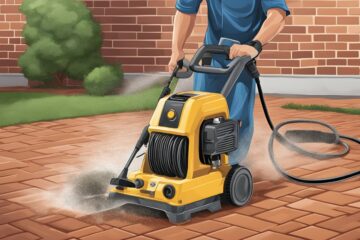Victorian houses have long been admired for their architectural charm and character. However, these older homes require special attention and care to maintain their structural integrity and preserve their aesthetic appeal. One crucial aspect of maintaining Victorian houses is the proper pointing and rendering of the brickwork. In this article, we will explore the significance of pointing and rendering, the different types of mortar used, and the best practices for ensuring the longevity of Victorian walls.
1. Understanding the Purpose of Pointing and Rendering
Pointing is the term used to describe the finish between bricks or stones used in the construction of a house. It serves multiple functions, including providing bedding for the stones, preventing water penetration, allowing the wall to breathe and drain, and accommodating movement and settlement within the structure. The mortar used for pointing should be flexible, allowing for thermal responses and settlement, and should be sacrificial in nature, requiring periodic replacement.
Rendering, on the other hand, involves applying a protective layer to the external surface of the wall. It not only enhances the appearance of the house but also provides additional protection against the elements. The choice of render material is crucial, as it should allow the wall to breathe, preventing the trapping of moisture that can lead to deterioration.
2. Different Types of Pointing and Rendering
The pointing and rendering used in Victorian houses depends on the age of the building and the materials used for construction. There are essentially two types of pointing and rendering:
a. Lime Pointing and Rendering
Older Victorian houses, typically those built before the 1920s, were constructed using lime mortar. Lime mortar is breathable and allows moisture to evaporate, preventing the buildup of dampness in the walls. Lime pointing involves using lime mortar to fill the gaps between the bricks or stones, providing a durable and flexible finish.
b. Cement Pointing and Rendering
Newer Victorian houses constructed after the 1920s often utilized cement mortar for pointing and rendering. While cement is a popular choice due to its strength and durability, it is less breathable than lime mortar. This can lead to moisture issues if not applied correctly. Cement pointing and rendering should be approached with caution, ensuring that proper precautions are taken to allow the wall to breathe and drain effectively.
3. Assessing the Condition of Victorian Walls
Before embarking on any pointing or rendering work, it is essential to assess the condition of the Victorian walls. This evaluation should include identifying any existing issues, such as water ingress problems caused by faulty gutters, roofs, or leadwork. Addressing these underlying issues is crucial to ensure the long-term effectiveness of any pointing or rendering work.
4. Choosing the Right Materials for Pointing and Rendering
When selecting the materials for pointing and rendering, it is essential to choose those compatible with the existing construction and allow the walls to breathe. Here are some key considerations:
a. Lime Mortar
If your Victorian house has lime pointing, it is crucial to use lime mortar for any repairs or renovations. Lime mortar is more flexible and breathable than cement mortar, making it ideal for maintaining the integrity of the walls. Ensure that the lime mortar used matches the original composition to maintain consistency.
b. Cement Mortar
If your Victorian house has cement pointing or rendering, choosing a cement mortar that allows for breathability is crucial. Consider using a modified cement mortar with additives that improve porosity and reduce moisture retention. Consult with a professional to ensure the right mix and application techniques.
5. The Process of Pointing and Rendering Victorian Walls
The process of pointing and rendering Victorian walls involves several steps to ensure a successful outcome. Here is a general outline of the process:
Step 1: Preparation
Before beginning any work, thoroughly clean the existing brickwork or stonework to remove any loose mortar or debris. This will provide a clean surface for the new pointing or rendering material to adhere to.
Step 2: Removal of Existing Pointing or Rendering
If the existing pointing or rendering is in poor condition, it may need to be removed before applying new material. This can be done using a combination of hand tools and mechanical methods, taking care not to damage the underlying brickwork or stonework.
Step 3: Mixing the Mortar
Depending on the pointing or rendering chosen, mix the mortar according to the manufacturer’s instructions. Ensure that the mix is consistent and free from lumps.
Step 4: Applying the Mortar
Using a pointing trowel or rendering float, apply the mortar to the gaps between the bricks or stones, ensuring a smooth and even finish. Take care to fill all voids and ensure proper adhesion to the existing surface.
Step 5: Finishing Touches
Once the mortar has been applied, use a jointing tool or a pointing trowel to create the desired finish. This can include a flush finish, recessed joints, or a decorative style, depending on the house’s architectural style.
6. Maintaining Victorian Walls
Proper maintenance is essential to ensure the longevity of Victorian walls. Regular inspections should be carried out to identify any signs of deterioration, such as cracks, crumbling mortar, or water damage. Prompt repairs and maintenance can prevent further damage and preserve the structural integrity of the walls.
7. Seeking Professional Help
While some homeowners may feel confident in pointing or rendering their Victorian walls, it is always advisable to seek professional help. A qualified tradesperson with experience in working with historic properties can provide valuable expertise and ensure that the correct materials and techniques are used. Our All Well Property Services team is highly experienced in rendering and brick pointing – get in touch today for more information.
8. Conclusion
Preserving the beauty and structural integrity of Victorian houses requires careful attention to the pointing and rendering of the brickwork. Whether your house has lime or cement pointing, choosing the right materials and techniques is crucial to allow for breathability and prevent moisture-related issues. Homeowners can ensure the long-term preservation of their cherished Victorian homes by understanding the importance of proper pointing and rendering. Seek professional advice when in doubt, and enjoy the timeless elegance of these architectural treasures.
Additional Information: Victorian houses are known for their distinctive architectural features, including ornate facades, decorative brickwork, and elegant proportions. Properly maintaining and restoring these properties require a deep understanding of their unique construction methods and materials.


